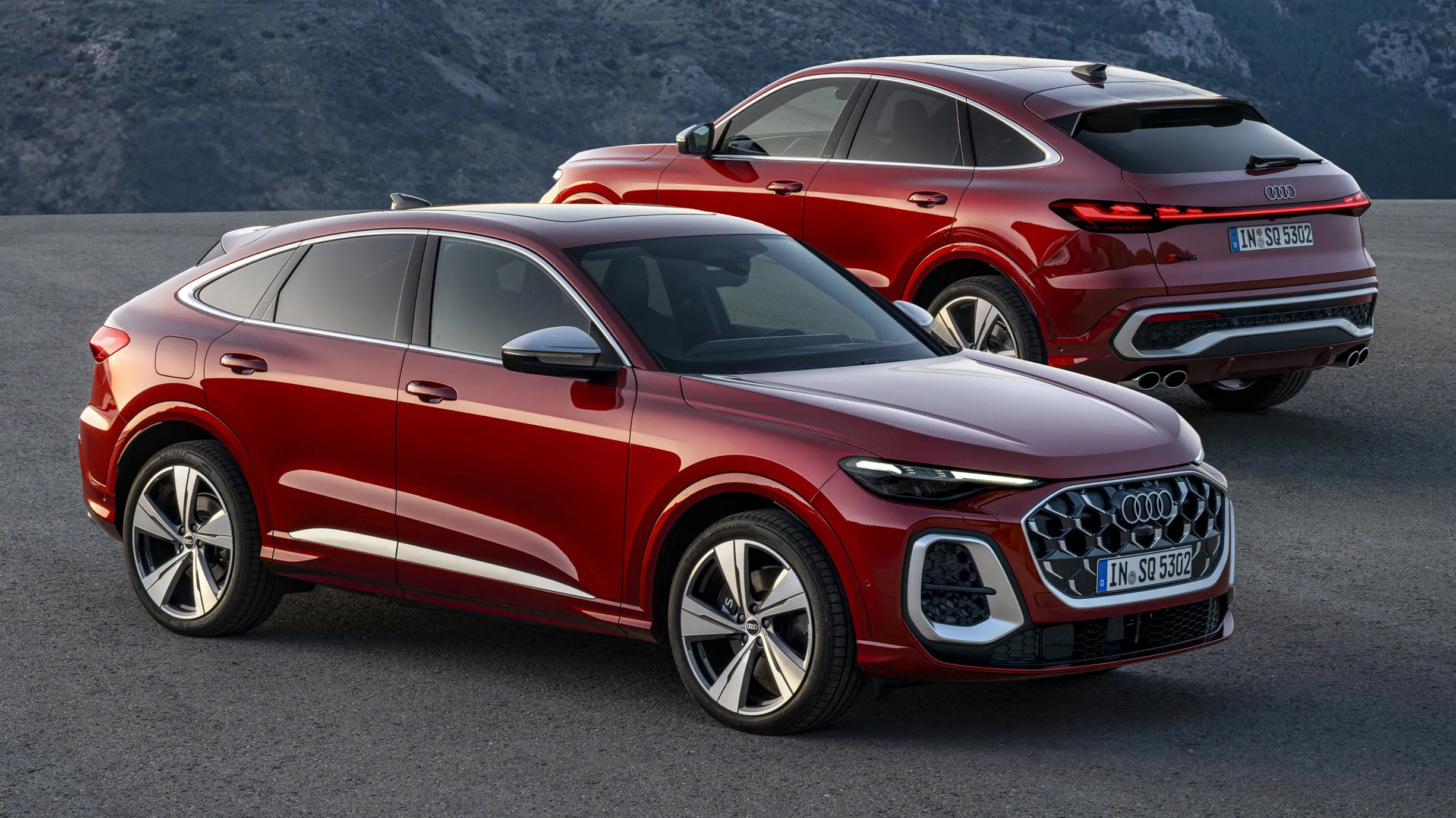SUVs are generally known for being large and heavy vehicles, which brings with it a number of advantages, but also some drawbacks.
For example, SUVs often need big, powerful engines to move their considerable weight, resulting in high running costs and costly servicing.
The additional weight compared to a smaller sedan or hatchback also puts more strain on suspension and braking components, which frequently leads to higher maintenance expenses as well.
SUVs That Are Cheap to Keep
Nevertheless, there are low-maintenance SUVs available, and we’ve demonstrated that by showcasing the most affordable options, using CarEdge’s projected five-year maintenance costs.
5. Toyota Highlander
5-Year Maintenance Cost: $1,962
Reliability & Pricing Data
- Starting MSRP: $39,520
- J.D. Power Quality And Reliability Score: 81/100
Although it stands as the most expensive model on the list, with a starting price that just fits under the $40,000 threshold, it is also the first to feature a five-year maintenance estimate under $2,000.
While vehicles like the Kia Soul and Nissan Kicks are nearly half the price to purchase initially, they don’t match up to Toyota’s renowned low running costs.
The Highlander hasn’t seen a redesign since 2019, which means it’s beginning to appear dated compared to newer offerings in its class.
Still, with its impressively low maintenance expenses and strong third-party reliability ratings, it remains a highly appealing choice for 2025 and the years that follow.
The Toyota Highlander is one of many crossovers in the brand’s lineup. Despite its name, it is neither particularly Scottish nor immortal, though owning a Toyota might come close to the latter, we suppose. The Highlander is available in both a traditional combustion engine version and a hybrid, offering a total of 22 different models across various trim levels and options for either FWD or AWD.

Under the hood, the standard Highlander features a 2.4-liter turbocharged four-cylinder engine, producing 265 horsepower and 310 lb-ft of torque. Meanwhile, the hybrid model is equipped with a 2.5-liter engine paired with two or three electric motors, depending on whether it’s AWD or not. This combination generates a total of 243 horsepower and a more modest 175 lb-ft of engine torque.
You know how certain Toyotas stand out? The 4Runner is the rugged, old-fashioned option, the Land Cruiser is the stylish, modern outdoor vehicle, and the Sequoia is “the big one.” But where does that leave the Highlander? If we’re being generous, it could be seen as the baseline model in a lineup full of somewhat redundant choices, especially considering the existence of the Grand Highlander, which is essentially a reskinned Lexus TX that at least offers a tolerable third row.
Not exactly. If anything, the Highlander is quite good at what it does. We’re just frustrated by the lack of anything particularly exciting about it. Like its sibling, the RAV4, the Highlander is intended to be a reliable daily driver, but with a bit more focus on being a family vehicle.
The RAV4 may not be thrilling to drive, but its more affordable price and Toyota’s efforts to give it a bit of personality make it a more appealing option for everyday use. The Highlander is larger and offers more space than the RAV4, but the question remains: is the extra room worth the additional cost?
We admit there’s a certain “why can’t you be more like your sibling?” feeling, as these two vehicles overlap in terms of intended use. The RAV4 offers more bang for your buck, while the Highlander delivers a comfortable ride without pushing its limits.
The hybrid variant also reduces the frequency of fuel stops. While the Highlander has different drive modes for more aggressive performance or better fuel economy, switching between them seems to make little difference, and they’re better ignored.
The Highlander does its job well, especially when transporting a few passengers. However, the third-row seating is best suited for extra cargo space rather than actual people.
Toyota has equipped the Highlander with plenty of tech and safety features, ensuring peace of mind both for avoiding potential problems and providing entertainment and navigation options for those onboard.
That’s a loaded question, but in terms of competition, the Highlander faces rivals like the Hyundai Santa Fe, which is more affordable, provides more space, and has a sharper design. The same could be said for the Honda Pilot and Kia Telluride. Interestingly, you wouldn’t need to leave Toyota’s lineup at all to find better options, whether it’s the RAV4 or another model.
The Toyota Highlander is a reliable vehicle that often gets lost among Toyota’s crowded lineup of utility vehicles. In this context, it’s not the cheapest, most capable, or most luxurious option—it’s simply the one that fits somewhere in the middle.
If it stands out at all, it’s due to its long-running and familiar nameplate. Otherwise, it’s just a decent all-around vehicle that provides ample space and covers basic family needs. The real question for potential buyers is how much that space is worth when shopping for a family-friendly vehicle.
The Highlander does its job competently, but there isn’t much about it that will make you feel like it’s the best choice for your money—apart from the fact that it’s relatively affordable. If price is your main concern, Toyota’s RAV4 might offer much of the same for less, though it lacks the Highlander’s cramped third row. Whether that’s a pro or a con depends on your perspective.
When it comes to driving, the Highlander delivers a worry-free experience. The hybrid version excels at stretching fuel economy while seamlessly switching between gas and electric power. All in all, the Highlander is an easy vehicle to use and live with, but it’s one that falls squarely into the category of “appliance” vehicles.
Also Read: Top 10 EV Features That Come in Useful in Daily Commute
4. Fiat 500L
5-Year Maintenance Cost: $1,890
Reliability & Pricing Data
- Starting MSRP: $22,500 (2020)
- J.D. Power Quality And Reliability Score: N/A
Even though the Fiat 500L hasn’t been offered as a new vehicle in the U.S. for several years now, CarEdge still includes it among the lowest-cost SUVs to maintain, with a projected five-year maintenance expense of only $1,890.
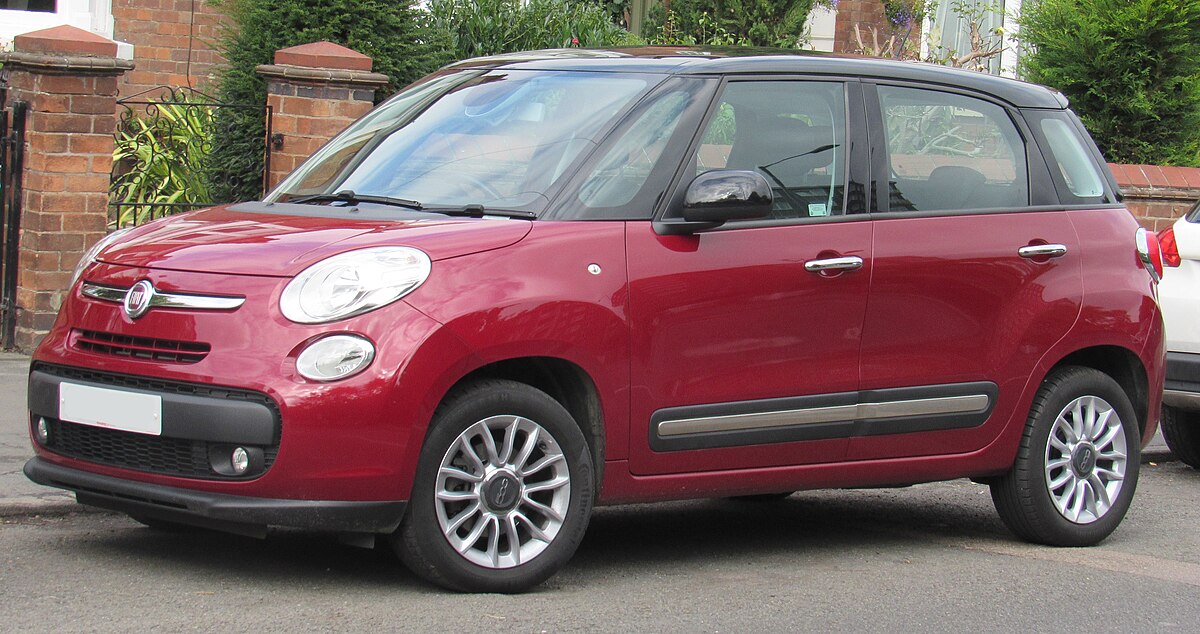
However, despite its affordable upkeep, there are more appealing alternatives available. The 500L is unexpectedly inefficient, has a harsh ride quality, and most competitors offer better equipment at a lower price point.
The Fiat 500L is a compact, five-door minivan that offers a more spacious alternative to the classic Fiat 500. It’s a quirky, unconventional option in the small car category, blending the iconic 500’s design with more room for passengers and cargo.
The Fiat 500L has a distinctive, boxy shape compared to the round, compact look of the classic 500. While it still retains some of the retro charm with its bold, rounded front end and playful design, the 500L is much roomier inside.
It provides ample space for up to five passengers and more cargo space, which is ideal for those who want the fun, city-friendly appeal of the 500 but need something that’s a bit more practical.
The Fiat 500L typically comes with a 1.4-liter turbocharged four-cylinder engine, producing around 160 horsepower. While it’s not a performance powerhouse, it offers decent acceleration and efficiency for city driving.
Its small size and relatively light weight make it nimble enough to maneuver through tight spaces and urban environments. The 500L also has a front-wheel-drive setup and comes with a six-speed manual or automatic transmission, depending on the trim level.
Inside, the Fiat 500L offers a surprisingly spacious cabin with good legroom and headroom, especially in the front seats. The rear seats are also reasonably comfortable, though they may feel a bit cramped for taller passengers.
The interior design focuses on functionality and fun, with colorful accents and a user-friendly infotainment system. The standard setup includes a 7-inch touchscreen display, Bluetooth connectivity, Apple CarPlay, and Android Auto.
One of the 500L’s key selling points is its practicality. The rear seats fold flat, allowing for more cargo space, and the large side windows help create an airy, open feel in the cabin.
The high roofline makes it easy to enter and exit the vehicle, which is great for taller individuals. The 500L is also equipped with a decent array of safety features, such as a rearview camera, parking sensors, and optional driver-assistance features like forward collision warning and lane departure warning.
The driving experience in the 500L is geared toward comfort rather than sporty performance. Its small size makes it easy to park and maneuver, though it can feel a little slow and unrefined compared to other small cars or crossovers. The suspension is tuned for a smooth ride over potholes and rough roads, but it may not feel as responsive or agile as sportier hatchbacks.
Fuel efficiency in the Fiat 500L is relatively good for its class. The 1.4-liter engine is generally able to achieve around 25-30 miles per gallon, depending on driving conditions. This makes the 500L a reasonable option for city driving, though it’s not as efficient as smaller, more compact cars like the Fiat 500 or other hatchbacks.
The Fiat 500L stands out in the market for those looking for something different—a quirky, fun-to-drive vehicle with a lot of character and more practicality than the smaller 500.
It’s not as refined or polished as some of its rivals, and it’s not a car designed for performance enthusiasts. But if you’re after a distinctive car with plenty of space, tech, and utility for urban driving or small families, the 500L could be a solid option.
3. Toyota Venza
5-Year Maintenance Cost: $1,887
Reliability & Pricing Data
- Starting MSRP: $35,070
- J.D. Power Quality And Reliability Score: 81/100
The Toyota Venza will not continue beyond the 2024 model year, as it is being phased out to make room for the more upscale Crown Signia SUV.
While it’s not built for speed, its three electric motors are engineered to maximize efficiency rather than performance, offering up to 40 mpg and a total driving range of 465 miles.
With an average maintenance cost of just $377 per year, it proves to be remarkably inexpensive to own and remains a strong option to consider even with its discontinuation on the horizon.
In the U.S., there are some excellent midsize SUVs, such as the Honda Pilot and Kia Sorento, but a vehicle that might not immediately come to mind is the 2024 Toyota Venza.
While it’s not equipped with a V6 engine, the hybrid four-cylinder engine in the Venza produces a respectable 219 horsepower and offers impressive fuel efficiency. The Venza is also well-equipped in terms of standard technology, especially with its safety features.
While the RAV4 may offer a more well-rounded package, the Venza provides a slightly more premium interior and carries Toyota’s renowned reputation for reliability. However, despite these advantages, the Venza is being phased out to make way for the new Toyota Crown Signia SUV.
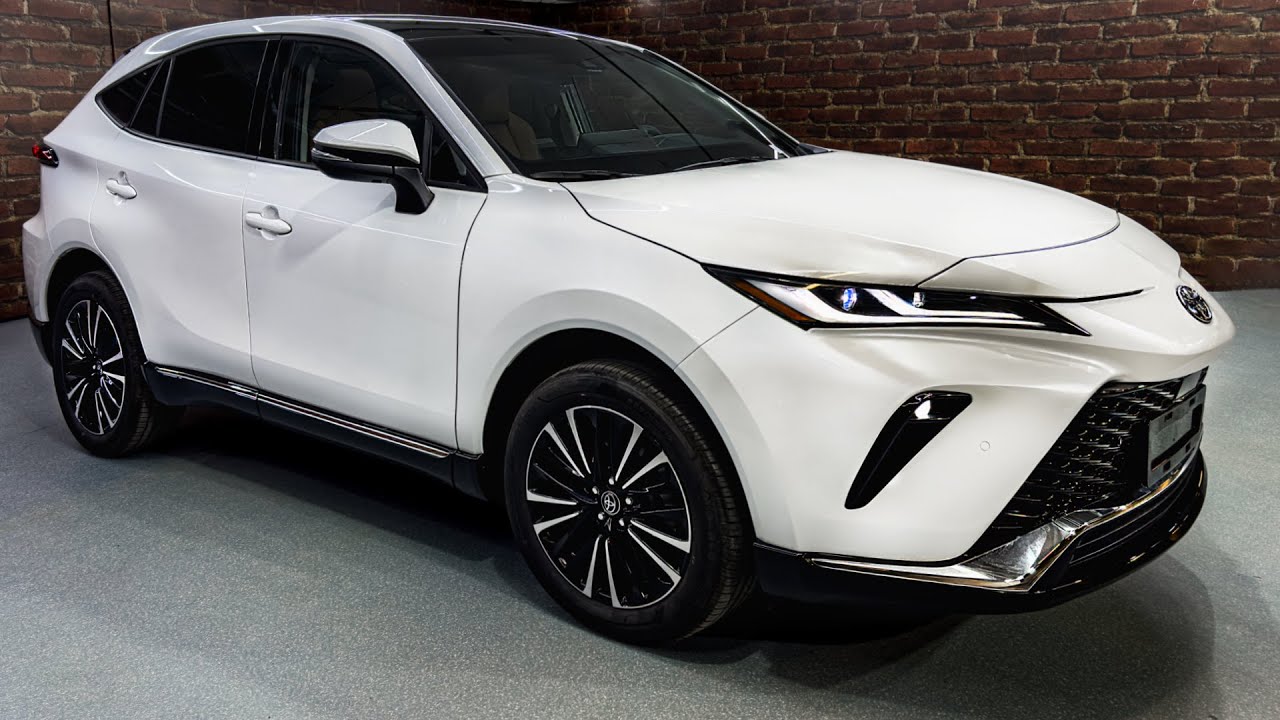
The 2024 Toyota Venza is a carryover model with no notable changes from the previous year, which is understandable considering that it’s nearing the end of its production cycle. The vehicle is available in three trims, plus one cosmetic special edition, with prices ranging from the mid-$30k to mid-$40k range.
However, if you want to balance your budget with your needs, the XLE offers great value, providing more space than the RAV4 and additional features that make it a solid mid-range option.
Inside, the Venza offers a near-premium experience, despite its average cabin space. The use of high-quality materials and the inclusion of a wide range of features set the Venza apart.
The interior might easily be mistaken for that of an entry-level Lexus, as the materials and styling feel surprisingly upscale. There are few hard plastics, and the center console is tall, providing ample space between the driver and passenger. The touchscreen display is positioned high on the dashboard for easy access without distracting the driver.
Additional controls for features like climate control are conveniently located lower down but remain within reach. These premium features are especially evident in the Limited trim, which comes with a larger screen and a more advanced sound system, enhancing the overall experience.
2. Toyota RAV4
5-Year Maintenance Cost: $1,865
Reliability & Pricing Data
- Starting MSRP: $28,850
- J.D. Power Quality And Reliability Score: 80/100
The Toyota RAV4 is a global best-seller, and it’s easy to see why. The RAV4 is not only inexpensive to operate with a projected five-year maintenance cost of $1,865 but it’s also affordable to purchase, starting at $28,850.
On top of that, it boasts strong reliability, as reflected in its 80/100 rating from J.D. Power for quality and reliability.
Beyond being cost-effective and dependable, the RAV4 is impressively versatile, offering off-road-oriented trims along with both hybrid and plug-in hybrid variants. It’s undeniably one of the lowest-maintenance SUV options currently available.
The Toyota RAV4 stands out in the compact SUV segment with its rugged appearance, though this look is more cosmetic than functional, especially now that the Adventure and TRD Off-Road models, along with their advanced torque-vectoring all-wheel-drive system, are no longer part of the lineup.
Despite this, the RAV4 remains a comfortable and capable vehicle that suits most people’s daily lives, which typically involve more on-road driving than off-road adventures.
The RAV4 offers ample space for passengers and cargo, along with a comprehensive suite of driver-assistance features and user-friendly technology. Its 203-horsepower 2.5-liter four-cylinder engine provides respectable performance, but it’s never particularly thrilling.
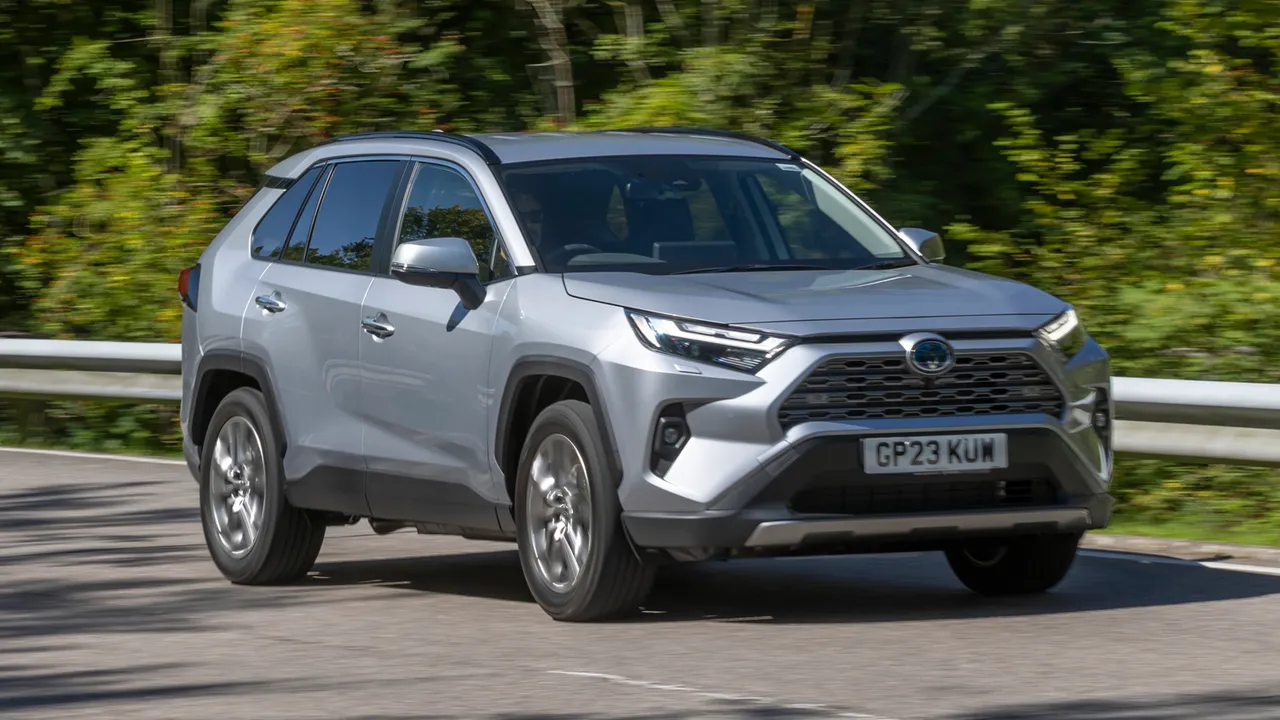
In terms of power, acceleration, and fuel efficiency, the RAV4 is outperformed by its hybrid and plug-in hybrid variants, which are reviewed separately. Competitors such as the Honda CR-V, Mazda CX-5, and Ford Bronco Sport offer a bit more driving excitement, though the RAV4 remains a solid choice for those prioritizing comfort and reliability.
For 2025, Toyota has removed the rugged Adventure and TRD Off-Road models from the RAV4 lineup, along with the more advanced all-wheel-drive system that came with them.
Other than these changes, the rest of the vehicle carries over unchanged from the previous year. The starting price for the 2025 Toyota RAV4 is $30,645, with the highest trim reaching up to $38,950 depending on the options and configuration.
We recommend opting for the mid-range XLE Premium trim, as it offers a good balance of features, including fog lights, 19-inch wheels, a power liftgate, a moonroof, dual-zone automatic climate control, faux-leather upholstery, and a leather-wrapped steering wheel and shift knob.
Toyota makes its suite of driver-assistance features standard across all trims, so there’s little reason to upgrade to a more expensive trim unless you specifically need features like ventilated seats, a hands-free liftgate, or a 360-degree camera.
The RAV4 is powered by a 2.5-liter four-cylinder engine that produces 203 horsepower and 184 lb-ft of torque, paired with an eight-speed automatic transmission.
Front-wheel drive is standard across all trims, with all-wheel drive available as an option. While the engine is generally efficient, it can feel a bit gruff, especially during highway passing maneuvers, and the transmission can be a little sluggish when downshifting.
The handling is solid and stable on the highway, and the RAV4 is competent on winding roads, though it doesn’t deliver the same level of driver engagement as some rivals like the Mazda CX-50.
At our test track, the RAV4’s performance was average for the segment, with the now-discontinued TRD Off-Road version reaching 60 mph in 8.3 seconds. The hybrid version of the RAV4 was quicker, achieving 60 mph in 7.4 seconds, as noted in our separate review.
When it comes to fuel economy, the RAV4 performs competitively within its class. Front-wheel-drive models achieve an EPA-estimated 35 mpg on the highway, while all-wheel-drive versions get 33 to 34 mpg.
The all-wheel-drive TRD Off-Road variant we tested delivered 32 mpg on our 75-mph highway fuel-economy route, which is a solid result, though the Volkswagen Tiguan slightly outperformed it with 33 mpg. We expect the simpler all-wheel-drive system available for the 2025 RAV4 to improve on this figure by a mile or two.
The RAV4’s interior emphasizes comfort and practicality, with plenty of storage options, though those seeking a more attractive cabin will need to upgrade from the base LE trim. The LE trim keeps costs low with cloth seats, hard black plastics, a leather-free steering wheel, and single-zone manual climate control.
The XLE adds a two-tone cabin option and some additional features, while the XLE Premium provides a more premium feel with faux-leather upholstery, upgraded plastics, a leather-wrapped steering wheel and shift knob, and a stitched and padded dashboard and center-console armrest. The rear seats in the RAV4 are easy to fold flat, offering a significant amount of cargo space.
Behind the rear seats, we were able to fit 10 carry-on suitcases, and with the seats folded down, that number increased to 22. The Nissan Rogue matched the RAV4’s cargo capacity, but the Subaru Forester offered slightly more space in both categories.
Also Read: 10 Safe and Affordable Cars in 2025 That Earned IIHS Top Safety Pick Plus Ratings
1. Toyota C-HR
5-Year Maintenance Cost: $1,776
Reliability & Pricing Data
- Starting MSRP: $24,280 (2022)
- J.D. Power Quality And Reliability Score: 90/100
If you’re searching for the cheapest SUV to maintain, heading to your local Toyota dealership won’t help, as the C-HR was discontinued in 2022 and is now only available as a used vehicle.
While a new generation of the C-HR has been introduced, unfortunately, it won’t be offered to the U.S. market.
Still, it’s definitely worth tracking down a used 2022 Toyota C-HR, since it’s the only SUV that CarEdge estimates can be maintained for under $1,800 during its first five years comparable to the upkeep of far smaller and simpler vehicles.
Additionally, the C-HR holds the highest J.D. Power score for quality and reliability at 90 out of 100, firmly establishing its position as the most reliable low-maintenance SUV.
Much like a quirky teenager who has matured into a corporate professional, the Toyota C-HR combines bold and unique design elements within a sophisticated, streamlined package. It backs up its striking looks by offering an engaging driving experience while remaining fuel-efficient, thanks to its hybrid engine options.
However, the C-HR isn’t the only option on the market. Alternatives like the Hyundai Kona and Skoda Kamiq are worth considering, and for those looking for a more premium experience, the Lexus LBX, Audi Q2, and Volkswagen T-Roc are also strong contenders.
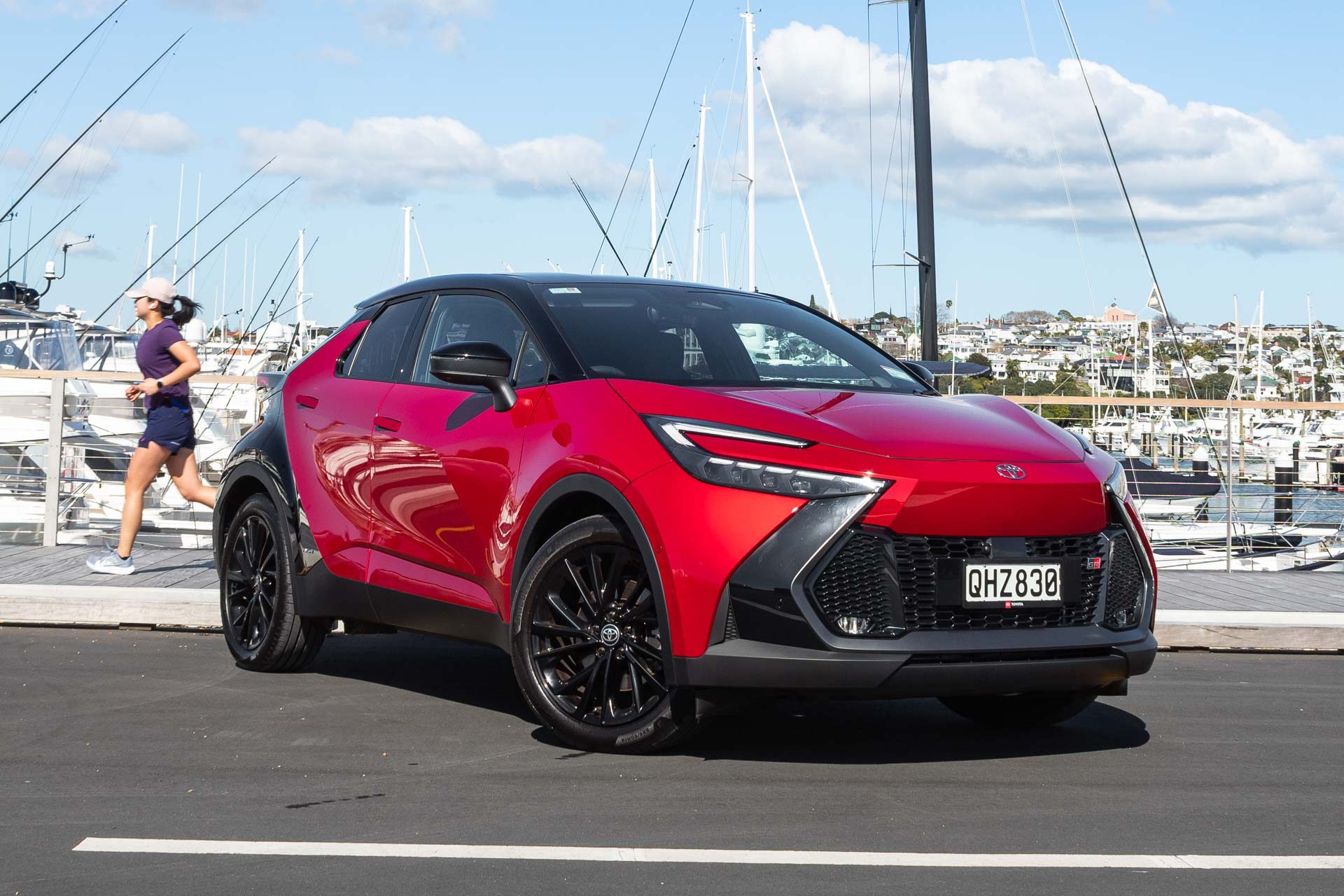
Yet, none of these competitors can quite match the C-HR’s standout visual appeal. With its large, pointed C-shaped headlights, sleek taillights, two-tone color schemes, and a design full of sharp angles, the C-HR is a true head-turner on the road.
Inside, the design is more conventional. While it maintains Toyota’s signature sturdiness and feels well-constructed, the interior includes a significant amount of grey plastic, which slightly detracts from the overall appearance.
Despite this, the layout is aesthetically pleasing, featuring wrap-around door cards that flow into the dashboard and a center console that rises toward the wide infotainment screen.
However, the base model comes with only an 8.0-inch screen, which is relatively small. The screen itself is clear and easy to use, though somewhat basic. The C-HR comes standard with Apple CarPlay and Android Auto, features that should be familiar to most drivers by now.
Higher-spec models offer a more refined suede-effect interior trim, while the base versions are equipped with plain black fabric. Unfortunately, rear-seat passengers aren’t treated to the same level of quality, as the rear door panels and trims are made from hard, scratchy black plastics.
In terms of interior space, the C-HR offers enough room in the front for a comfortable ride, and the highly adjustable seats make finding an ideal driving position simple. However, the rear seats are a different story, as they offer limited knee room and are made even less inviting by the small, forward-set rear windows, which create a dark, cramped atmosphere.
The front also benefits from a variety of storage options, including deep door cubbies, cupholders, and a phone slot beneath the climate controls, which doubles as a wireless charger on all trims except the base model.
Unfortunately, rear-seat passengers don’t have the same amenities, and the C-HR’s 388-liter boot is smaller than that of many rivals, such as the Nissan Qashqai and Volkswagen T-Roc.
Where the C-HR really shines is in comfort, particularly when navigating poor road conditions. Potholes, cracked roads, and speed bumps are hardly a concern for this small Toyota, which handles them effortlessly.
On the motorway, the C-HR continues to impress with its well-insulated cabin, though both engine options can be noisy when accelerating to cruising speeds. Despite its smooth suspension, the C-HR remains fun to drive on winding roads.
While it may not match the sharp handling of a Toyota Supra, it feels nimble and composed as it tackles corners. The main downside, however, is the somewhat rough engine noise.
As an overall package, the C-HR stands out as a stylish, comfortable, and economical vehicle, making it an excellent choice for those seeking an all-around solid performer.
That said, the small boot may be a concern for larger families. If you’re interested, be sure to explore our Toyota C-HR deals, or take a look at our C-HR lease options. You can also browse used C-HRs through our trusted dealer network or check out other used Toyotas. When the time comes to upgrade, Carwow can even assist you with selling your current car.
SUVs That Drain Every Month
People have a strong affinity for SUVs. So, it’s no surprise that automakers are constantly rolling out new variations almost every other week.
While this vehicle class is highly regarded for its spaciousness and utility, today’s consumers are looking for models that are not just capable but also built to withstand serious wear and tear.
Automakers are taking notice, responding by designing off-road SUVs tailored to meet this growing demand.
In related advertisements, you’ll often see these vehicles tackling rugged terrain, effortlessly maneuvering around boulders like it’s second nature.
The “off-road” SUV craze has taken hold, and chances are you’ve become part of the trend. SUVs continue to rise in popularity, with more drivers choosing them over traditional sedans and wagons.
While SUVs offer several advantages, they also come with compromises particularly in practicality, fuel economy, and especially in maintenance and repair costs due to their size and widespread appeal.
We’ve revised this list with more in-depth information on reliability and repairs to help you make an informed decision that aligns with your budget.
However, beyond the appeal and rugged charm of these SUVs often lie steep maintenance and repair bills.
After the initial excitement of buying an eye-catching off-road SUV that promises thrilling adventures, many owners find themselves struggling to keep up with the mounting costs of upkeep and repairs.
That’s a hard pill to swallow. But if you’re still in the market for one, you can avoid those models known for being financial black holes.
How? By doing your homework and reading resources like this one to identify which vehicles are likely to become a major burden on your finances.
Fortunately, we’ve compiled a list of off-road SUVs that, despite their undeniable cool factor, are notorious for draining wallets with their costly maintenance and repairs.
5. 2013 Audi Q5
Reliability Score: 3.5/5
Audi is renowned for its sporty vehicles, innovative design, and outstanding build quality. The 2013 Audi Q5 exemplifies these qualities with a sleek, athletic exterior and a comfortable, well-appointed interior.
It also stands out as a solid off-road option, thanks to its 2.0-liter turbocharged four-cylinder engine that produces 211 horsepower at 4,300 rpm and 258 pound-feet of torque at just 1,500 rpm, delivering both power and efficiency in rugged environments.
However, when it comes to maintenance and repair costs, the 2013 Q5 might give potential owners some hesitation.
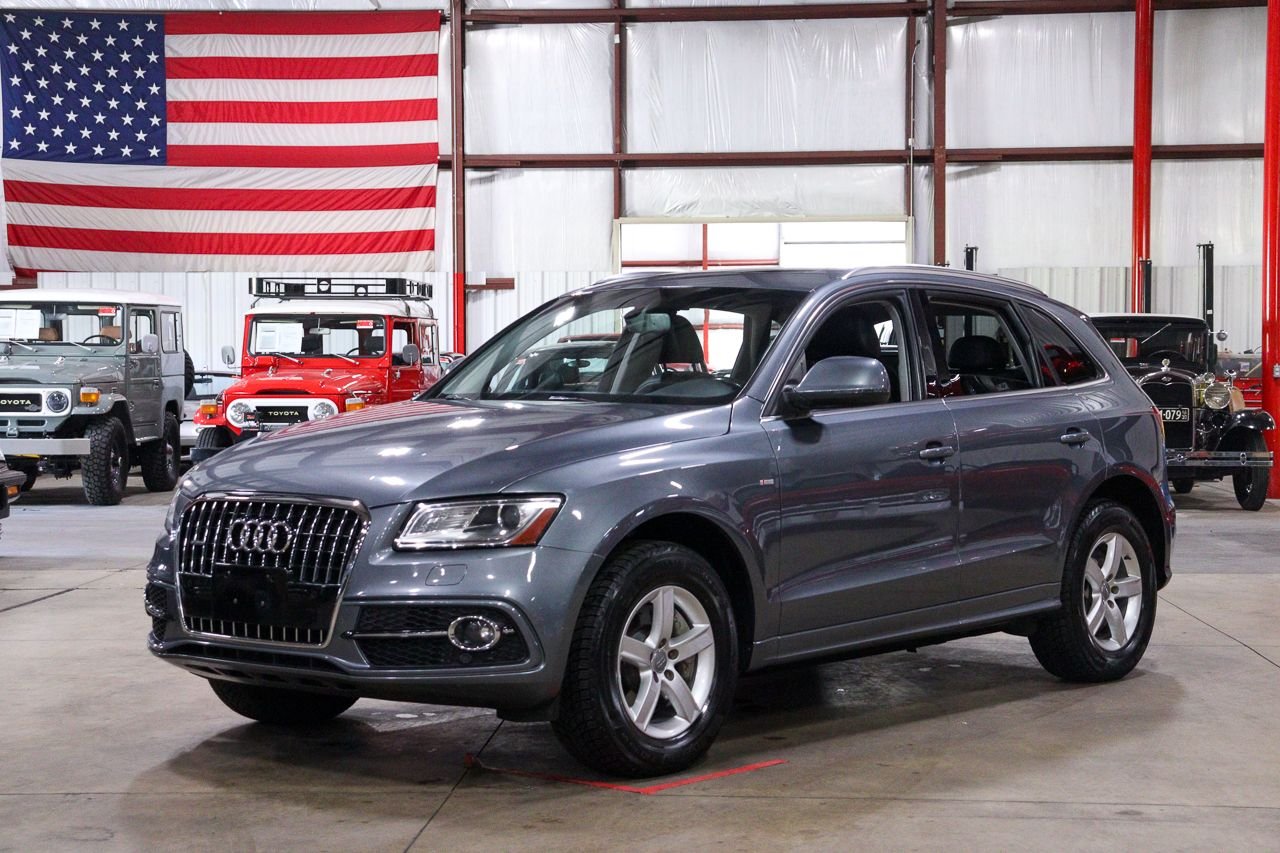
The average yearly maintenance expense sits above the $1,000 mark $1,025 to be exact which is higher than many other vehicles in its class.
Additionally, the model has been associated with a number of reliability concerns.
Common problems reported by owners include excessive oil consumption, stretched timing chains, faulty water pumps, and issues with the steering rack.
Over the first five years of ownership, maintenance costs are estimated at $3,189. With five recalls on record, the 2013 Audi Q5, while stylish and capable, may require deeper pockets to keep it running smoothly.
4. 2021 Land Rover Discovery Sport
The 2021 Land Rover Discovery Sport, produced by Jaguar-owned Land Rover, a company with a strong legacy in off-road SUVs since its founding in 1948 in the United Kingdom, remains one of the brand’s most successful models.
This version offers a spacious cabin that comfortably seats seven passengers and is powered by a 2.0-liter four-cylinder engine producing 246 horsepower and 269 pound-feet of torque, making it a capable and stylish choice for off-road adventures.
However, maintaining this luxury SUV comes at a high cost. In the first year alone, owners can expect to spend at least $869 on maintenance and repairs, with expenses increasing over time, reaching an estimated $4,347 over five years.

Additionally, there is nearly a 50% chance of encountering a major repair within the first ten years of ownership.
Common issues reported by owners include traction control randomly deactivating, steering that is so vague it’s difficult to tell what the wheels are doing, and poor ergonomics.
With two recalls on record, the 2021 Land Rover Discovery Sport, while impressive in capability and comfort, may not be the most economical choice for those concerned about long-term reliability and repair costs.
3. 2010 BMW X5
The 2010 BMW X5 features a straightforward yet attractive design both inside and out. Its spacious cabin combined with solid off-road capabilities makes it a versatile vehicle suited for a variety of needs.
While these specifications might initially make the X5 an appealing choice, many buyers reconsider once they face the vehicle’s notably high maintenance and repair costs.
Estimates indicate that maintenance and repairs for the 2010 BMW X5 average $982 per year.
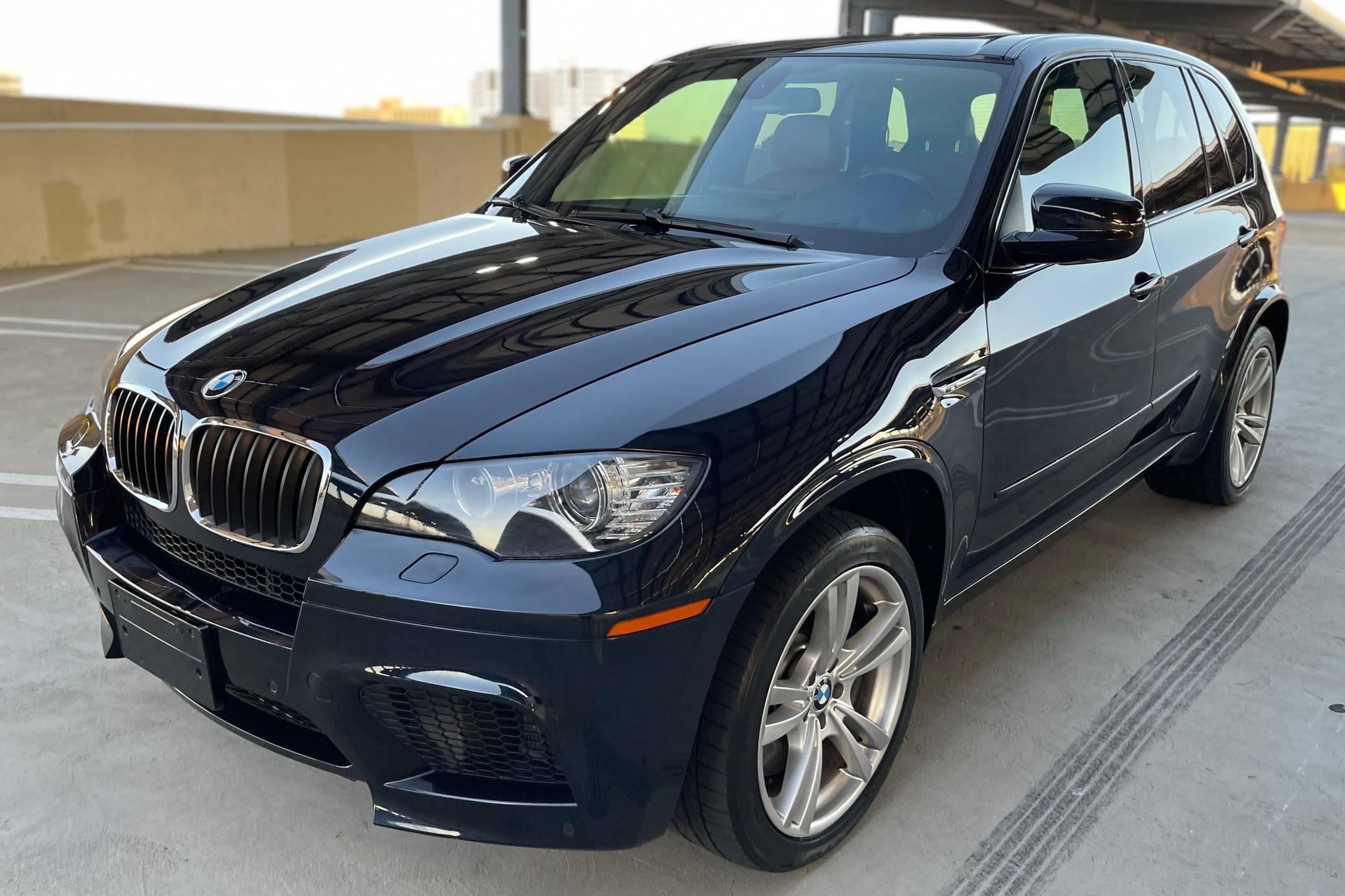
Additionally, common problems such as failing coolant pumps, excessive oil consumption, fuel injector issues, and glitches with the iDrive system can lead to significant unexpected expenses.
Over the first five years, the total maintenance cost is estimated to reach $4,908. The model has also been subject to 21 recalls.
Owners have reported concerns including exterior trim quality that doesn’t quite match up to competitors, PCV valve failures that cause overheating, as well as the high cost of tires and replacement parts.
2. 2008 Mercedes-Benz GL
The 2008 Mercedes-Benz GL is widely regarded as one of the best seven-seater SUVs available, thanks to its unibody construction, refined design, and mechanical sophistication. These qualities make it highly capable of navigating rough and uneven terrain with ease.
Since it is no longer in production, buying a used model is the only option, but prospective owners should be aware that the vehicle suffers from several issues mostly electrical that result in an average annual maintenance and repair cost of $902.

Beyond the financial impact, safety is a concern as well, with recalls issued for service brake and trailer hitch failures.
Owners have also reported problems such as harsh transmission shifting, air suspension failure, driveshaft cracking, oil leaks, and PCV valve failures, making maintenance both costly and essential.
1. 2017 Jaguar F-Pace
The 2017 Jaguar F-Pace exemplifies Jaguar’s commitment to luxury SUVs, featuring a supercharged 3.0-liter V6 engine producing 380 horsepower in its S and First Edition models, along with high ground clearance for tackling difficult terrain.
However, despite Jaguar’s reputation for reliable models like the XJ Portfolio and S-Type, the F-Pace was ranked the least reliable car in 2017.
Maintenance and repair costs average $853 per year, and owners face a significant risk of encountering reliability issues.

Reported problems include electrical faults that cause blank instrument panels, malfunctions in the Start/Stop system, fuel pumps insecurely bolted due to incorrect bolt length, and timing chain failures.
Considering these issues and expenses, the 2017 Jaguar F-Pace may lead to substantial financial strain for owners who are not prepared for the associated upkeep.

